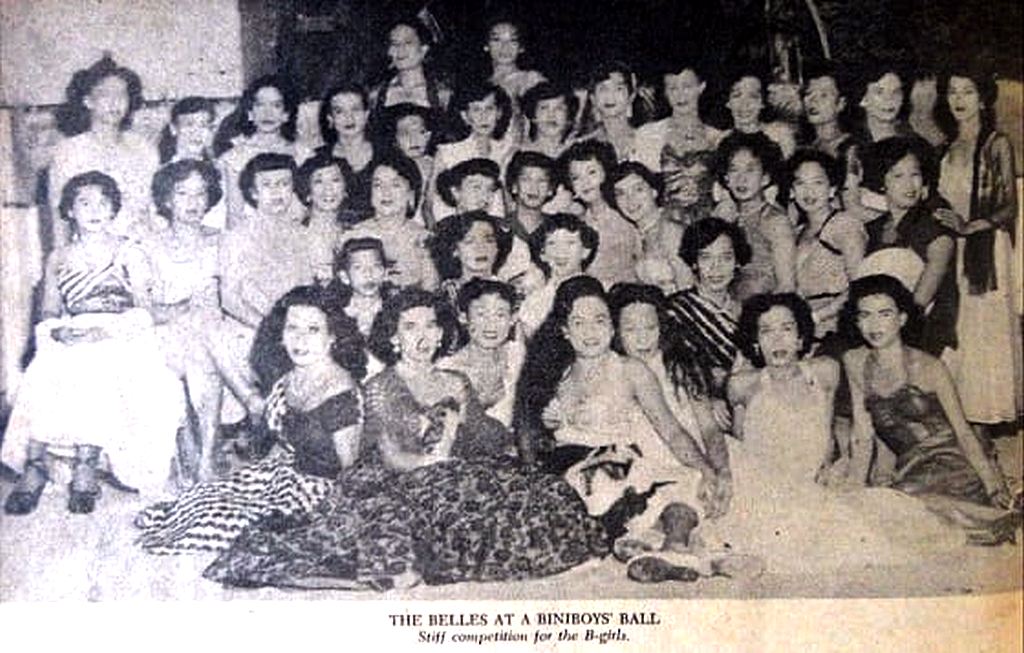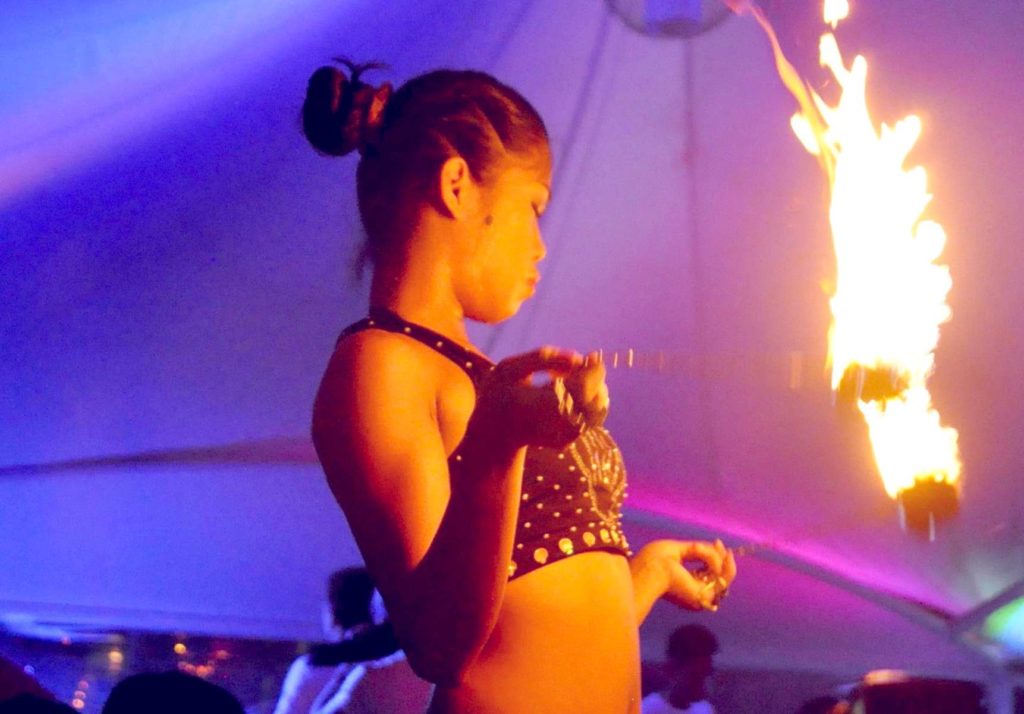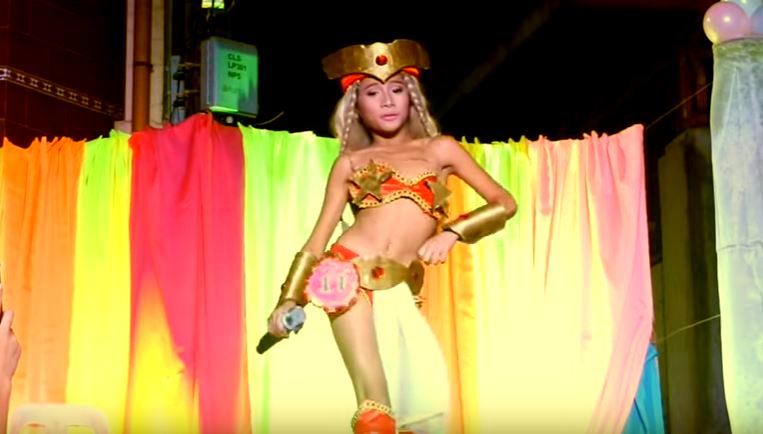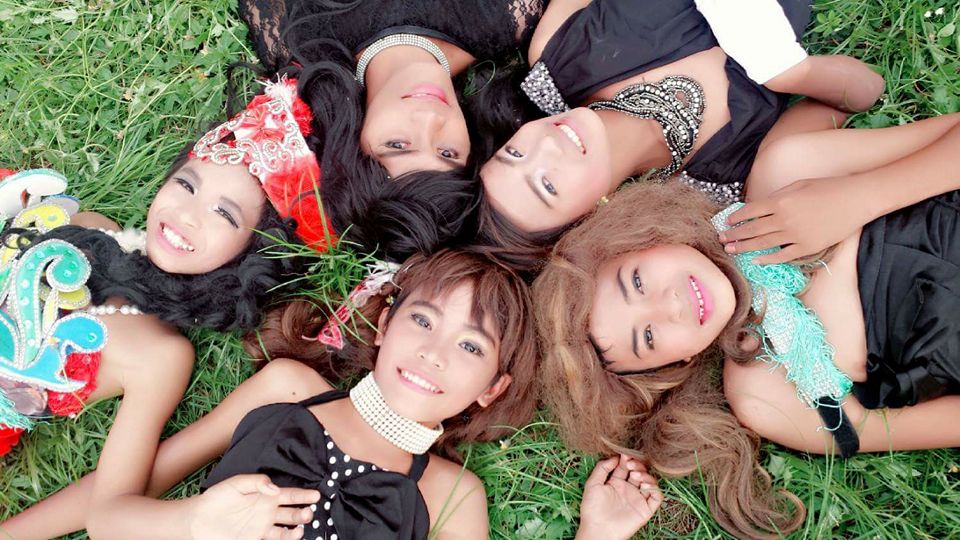Originally posted 2022-06-06 16:10:01.
How the bini boys became ladyboys: until the 1970s, Manila and other cities in the Philippines were famous for the ‘binibaes’, sometimes called ‘bini boys’.[1]
Binibaes were young males aged from about twelve up, sometimes a little younger, who came to the city to work and seduce men. They dressed and lived as women, but most did not take hormones.
The bini boys dress as girls…The…acceptance of bini boys is revealed in popular comic strips, T.V. series, motion pictures and plays in which they appear as characters, usually in a vein of good-natured humor. As an example: in a Philippine series similar to Batman, the Philippine hero is continually obliged to pull his Robin away from attempted amorous passes at other males.
Few of the bini boys engaged in any sexual relations among themselves although many considered themselves homosexual. In (sexual relationships), the majority preferred passive anal relations but all were equally willing to perform fellatio. The custom…is to seek to prolong sexual relationships. [2]

The writer’s observations about the binibaes, sixty years ago, hold true of kabaklaan today, with little difference. Longhair baklas still consider themselves to be homosexual males but refuse sexual relations with other baklas, preferring ‘real men’. Their desire, with a partner, is to be sexually receptive and they spend inordinate amounts of time and money beautifying themselves.
Because boy prostitutes in the Philippines are nearly always transvestites… becoming a prostitute begins with the art of learning to act and dress as a woman. They are under no compulsion (either to be prostitutes or to appear to be women.)
The village youngster who comes to the city to learn the bini boy’s trade, treats it as an honourable profession and works hard to learn how to dress like a woman, look like a woman and to please sexually in a feminine manner. When he is quite young, nearly all of his earnings, with the exception of money spent on food, must go into clothing and cosmetics. The bini boys frequently go to beauty parlours where they spend a large chunk of their money.[3]
In the 1950s, they congregated in Pasay, Ermita and Malate, where, eventually, they came to the notice of civic authorities. Remember that the binibaes were exuberant boys come to the big city to hunt men. One may imagine that they were a little forward in their manners! Their response to unwelcome official attention was brilliant: they began to stage gala balls for themselves and their male partners. These glamorous events captured the imagination of the public and media and painted them in a positive light, because the binibaes were so beautiful – and Filipinos love beauty like life.

Most of the binibaes’ partners were middle-class men, perhaps married, or young men from good families, who were often engaged to be married but could not have sex until they were. Just being from such families meant that the girls they might ultimately wed were not available for casual sex; this is a conservative, Catholic culture. These men are called binatas.
Dr Michael Tan put it like this:
The male libido (libog) is considered to be strong and needs to be satisfied. It is considered acceptable for a ‘real man’ to have sex with a bakla as long as he himself does not become bakla.(Ed. ie, is never penetrated.) This is especially the case for binata or unmarried males, who are not allowed access to their girlfriends because girlfriends have to be ‘respected’ and female virginity retained intact until marriage.[4]

Men saw the binibaes, described as baklas above, as beautiful, available girlfriends who could not fall pregnant and so ruin a man’s life plan. (Or his mother’s!) If the girls were young, it was because that was when they were most beautiful.
(Binibaes) pride themselves in being more affectionate and more solicitous to the pleasures and desires of a man than any woman. When he is quite young, and beginning the trade, the boy may find no pleasure in the sexual act at all so he concentrates on learning to forget himself and to provide pleasure for his customer. Soon, however, he does begin to get thrills from the sexual acts for these are the only sex he allows himself. His desires naturally adapt to the situation.[5]
The author here makes it clear: some binibaes at least were not naturally attracted to the receptive sexual role, but rather, learned to enjoy it.
One boy…said he…had already discovered that he liked to sew and his cousin was proposing that he go to Manila as apprentice to a dressmaker. All of the employees were bini boys and the position would not be open to him unless he also became one. This boy, while he was still 11, developed a “crush” on an older lad — a prominent athlete and social leader in his school. When the older boy discovered the youngster’s infatuation, he…seduced the youngster into passive anal relations. Because of his crush, the younger boy submitted out of gratitude for the older boy’s attentions. In time, he grew to like playing the female role.[6]

The boy, therefore, not only accepted the receptive role in sex, but his lover was masculine; a ‘prominent athlete and social leader’. In other words, he was not a gay, but still saw no impediment to penetrating a boy, as long as she adopted the female sexual role.
The boy was reluctant at first to wear women’s clothing, but this was because it represented a decisive step towards becoming a binibae.
He said
‘If I had not been considering becoming a bini boy, I could have tried on (my sister’s) clothes without a second thought but, as it was, I dreaded even to experiment.'[7]
This tells us that the boy had no history of cross-dressing, although he had been sexually receptive for some time.
‘Finally, my cousin forced me to remove my clothes. He was much older and stronger and he was able to make me dress like a girl. It wasn’t as bad as I had expected but I did feel very vulnerable and unprotected in a dress, especially when my cousin teased me by putting his hands up under it. As my cousin was making me up, my older friend arrived – the schoolboy on whom I’d had the crush. Even though he hadn’t paid much attention to me for some time, he was obviously aroused and delighted at seeing me in a new light. He immediately made a date with me to take me to a motion picture…I went with him and he was terribly passionate. Dressed as a girl, I now felt differently towards him – more loving and free. He sensed the difference.'[8]
This poses an interesting question about her lover, the binata, though. He was a heterosexual boy who would one day marry and be a father. So how could he so enthusiastically be involved with his lover, who was also male?
The lover was quite aroused sexually by the entire experience of the transformation. (He and the boy had) frequent and passionate love sessions during this time.[9]
Men are attracted to femininity. Heterosexual men are attracted to passing male transsexuals of the HSTS type, because of their performance of beauty. It is merely transphobic social conditioning that makes them reject that desire – a conditioning that largely does not exist outside the Anglosphere. So, as his lover became more sexually compliant and attentive, under the influence of his own caresses and their lovemaking, she also became more feminine and so, more attractive to the binata. The adoption of conventional gender roles turned the relationship into one between a man and a woman.
Binibaean, the life of the binibaes, was colourful, fun, rewarding and it offered, to both parties, something they very much wanted but could not otherwise have: sex — and socially-approved sex at that.
It was a life, a career, an opportunity – and you just had to be beautiful. They could be stars, centres of attention, doted on by loving, handsome men, whose bodies they would enjoy in bed. They had no hesitancy in this, since all they were doing was accepting the social and sexual roles it demanded.
Even if they were not already so inclined, they soon learned to take pleasure in being penetrated. Perhaps, on that first occasion, they had a Eureka! moment and realised that this was how they always wanted to have sex – then adapted their gender to suit. Once they became binibaes, the male competitive urge made them want to be superb at it. It would be naive to assume this did not still happen.
Sexuality
In Southeast Asian culture the fundamental principle of sexuality is less ‘attraction’ than practice. He who penetrates is male and she who is penetrated is female, even if she be biologically male herself. So when Filipino men walked out with binibaes on their arms and were intimate later, they did not see anything homosexual about it, nor did the girls. The men were attracted to the binibaes as girls; in sex, they penetrated them as they would any girl – and remember, most binatas would never have enjoyed a vagina, because of the protection of female virginity.
The binibae, for her part, would give her very all to be supremely loving and feminine in bed, in return. She would assist her lovers in their suspension of any disbelief, help them to make the illusion a reality; she would become, in their eyes, a woman, exactly as today’s baklas, naked in bed with their men, are realised as women. Performance, again, is at the core of identity.[10]
The daily life of binibaean
Nominally, the binibaes made their livings as seamstresses, hairdressers, shop-workers and beauticians, just as do many baklas today. Does this mean no money changed hands between the binibaes and their lovers? Not at all. In Asian culture, men support their girlfriends and wives. Failure to do so causes loss of face and, quite likely, loss of said partner – which would quickly have been transmitted to all the other binibaes, branding the man as ‘cheap’.
The natural desire of males for sex was what binibaes thrived on. This appears to have been tolerated under a general cultural expectation that men would seek sex with them since, after all, men need sex and unmarried girls were off-limits. At the same time, there was an understanding that boys also need sex and so men and binibaes were ideally placed to solve each other’s problem.
The binibaes blossomed when there were no affordable feminising hormone treatments and so they constantly had to battle time. They began their careers around the age of eleven or twelve because that was when they were most beautiful. It was also when they were most sexually driven; testosterone delivery peaks at puberty and remains at lifetime highs to age nineteen to twenty-five. Like boys everywhere, binibaes were desperate for sex and this lifestyle guaranteed them it.

Sex and social class: the foundation of binibaean
The binibaes were definitely an upmarket phenomenon. Perhaps most strikingly, their lovers, the binatas, funded them. This was not the same as a simple exchange of money for sexual services, because this type of man would not employ a prostitute. It was a rather more sophisticated arrangement which depended on a traditional view that men support their wives financially. So the binibaes became, effectively, temporary wives who would be replaced by a woman, when the man married.
This, however, did not always signal the end of the relationships. There are reports of men continuing to ‘visit’ their binibae former wives, though now in a much more clandestine manner. A successful romantic and sexual relationship is not forgotten easily and it appears that at those times when a wife was withholding sex, for whatever reason, men might seek it with their old binibae lovers.

Binibaes were, universally, working-class boys with low education, from poor backgrounds. The binatas could not have been more different. They were educated, cosmopolitan, urban men, usually young but not always. They came from wealthy backgrounds and either were professionals or had aspirations to being so.
This social difference is important. Throughout history and in contradiction to the fashionable (in some quarters) Platonic view, opposites attract. Like does not go with like.
Femininity: gender matters
The binibaes were supremely feminine, so their relationships with men were conventionally heterogender. But perhaps that is not quite enough and another opposition was called into play to replace the sexual one, for binibaes, again universally, were genitally intact – indeed, this seems to have been a point of attraction. Some narratives describe the binibae’s seduction of a man through a sensual striptease in the bedroom, culminating in the ‘moment of truth’ when she revealed herself to be a boy, probably fully aroused, since she did not take hormones. This is an art that modern ladyboy sex workers also perform.

The social class divide in conservative cultures, like those found in Southeast Asia, is almost as marked as the gender divide. So it is possible that the class divide between binibaes and binatas was actually enough to replace the sexual one, by substituting the male/female dynamic with a class-based one. Men certainly took the dominant and penetrative role in their relationships with binibaes, with the latter deferring to the former, both socially and sexually – just as happens in a conventional male/female one.
In all the accounts, binibaes were described as being receptive in sex. They might not have been exactly ‘passive’ – there would have been a fair few room-wreckers, just as there are amongst ladyboys today – but the heterosexual convention of who penetrated whom was strictly observed.
The men were never ‘homosexual’
Once again, as is found today between men and ladyboys, baklas, the men were never homosexual, nor were they considered to be by the society around them, as long as they themselves were never penetrated. They were just being normal men, in a culture that understood and accepts that men need sex. Since the obvious solution – partnering with a natal woman – was outlawed by social conventions protecting female virginity, then partnering a boy who looked and acted like a girl was an approved compromise.

Some might reasonably ask ‘Why did the binatas not just hire prostitutes? After all, there have always been plenty of those.’ Again, the answer lies in convention. Effectively, only working-class men employ prostitutes. If middle-class men do, it’s in secret; but there was nothing at all secretive about binibae/binata relationships. As middle-class males, the binatas would have considered it below their social station to make use of a prostitute, whose body, after all, was regularly served up to any man with a few pesos.
A binibae was different; she was a delicacy, a special person who became a man’s temporary wife and in both public and private, performed that role, as long as they were together; and after that she would go back to being a seamstress — and probably, occasional mistress. Yes, she did depend on her binata for money, but not in the way that a prostitute does, which is to be a cash register ringing up the bill.
It was socially acceptable for a middle-class man to date and have sex with a binibae, while it simply was not, with a prostitute.
Male virility
Male virility is of supreme importance in Southeast Asia. This reflects a widely-held view that virility, rather than female fertility, is the more important factor in reproduction. This view was common in the Ancient World and remains so today, in most of it.
Sex with a binibae demonstrated a man’s virility and the more beautiful his binibae lover, the higher would his status be. At the same time, it does not appear that the binibaes were thought of as being homosexual in any sense that a modern Westerner might understand. They were, strictly, transsexual, adopting every appearance and affectation of the opposite sex and crucially, being women in bed.
Only married females with children are really considered to be women in these cultures. Prior to that, they are ‘girls’ but with a crucial corollary: one does not have to actually be female to be a girl (although, in this context, one would to be a woman.)
This means that the concepts of ‘girl’, ‘girlfriend’ and others are not quite fixed on one physical sex. There is ambivalence, some cultural ‘wiggle room’ – the kind of thing USicans so detest. So there can be ‘male girls’ that is, males who successfully perform femininity. Since femininity is identical to feminine gender and attraction is not to sex but to gender, then there can be ‘male girlfriends’ of conventional masculine men.

Crucially, as long as the man does not break the golden rule – that he must never allow himself to be penetrated – then such relationships break no social conventions at all. This is as true today, particularly of foreigner/ladyboy relationships, as it was in the past, of binibae/binata ones. That some in the West struggle with this hardly concerns anyone here.
The end of the era
Two factors mitigated against the binibaes. The first was education reform. This began by making elementary education compulsory, but later was extended to graduation from junior high (age fifteen-sixteen).
At the same time, a previously laissez-faire approach to adolescent sex came under review, as it did across the region. Much of this was at the instigation of the United States, which used a typically imperialist carrot-and-stick approach in its attempt to ‘Make the world America — whether it likes it or not;’ do what we want and we’ll give you money and if you don’t you’ll regret it — we have bombers as well.

As a result of this pressure, the authorities in the Philippines extended the ‘age of consent’ laws, which had hitherto applied only to females, to males. This put the age of legal consent to sexual activity at twelve — interesting when one considers that many baklas today claim to have been sexually active by ten!
The consequence was that the binibaes disappeared. They had been high-profile enough to attract unwanted attention from US-influenced moralisers, but not numerous enough to resist the resulting pressure on them.[11]

A door closes, another opens
But when one door closes another opens: feminising hormones became available, cheaply enough for batang baklas to buy. These both suppressed the effects of testosterone and also caused appreciable feminisation. Now, a bakla was not running from time. Hormones would maintain her femininity for decades and today there are many in their fifties and older – indeed, their seventies, like the beloved Barbie Anderson – who are still beautiful.
So they stayed home in the villages and provincial towns, and in the barangays in the cities and took their hormones (although still having to wear boy uniforms to school, giving the fascinating phenomenon of schoolboys with boobs.) They strutted their stuff on the barangay pageant stages and fucked the local boys and men like rabbits (the authorities didn’t care a jot about those: they have no money to extort) until they could leave school and become fully-fledged ladyboys.
After all, nobody cares whom baklas have sex with, as long as it doesn’t get in the papers.

[1] ‘Binibae’ means ‘pretty girl’ while ‘bini boy’ obviously, means ‘pretty boy’.
[2] Drew & Drake, Boys for Sale.A Sociological Study of Boy Prostitution. New York, 1969
[3] ibid
[4] Tan, M. Walking the Tightrope: Sexual Risk and Male Sex Work in the Philippines. In Aggleton, P (editor) Men Who Sell Sex: International Perspectives on Male Prostitution and HIV/AIDS1998 Routledge
[5] Drew, D & Drake, J. Boys for Sale.
[6] ibid
[7] ibid
[8] ibid
[9] ibid
[10] A deal of Western misinformation centres on the proposition that the receptive partner in anal sex does not enjoy it herself, she’s only doing it for her lover’s pleasure. This is utter poppycock. Baklas and their forebears, the binibaes, adore anal sex. They orgasm from it, indeed many will affirm that the orgasm is better than anything they can achieve through stimulating the penis directly. So once they have accepted the role of being a woman sexually, they will pursue this form of sex just as keenly as other males would pursue sex in which they penetrate.
[11] For comparison, applying the same factor that has accurately been used to predict ladyboy numbers in other south-east Asian countries, suggests that today, there are at least 75,000 baklas in Manila alone. Bear in mind that the population of Manila in 1960 was around 2.27 million, as opposed to 15 million in 2015. (https://books.mongabay.com/population_estimates/full/Metro_Manila-Philippines.html)



